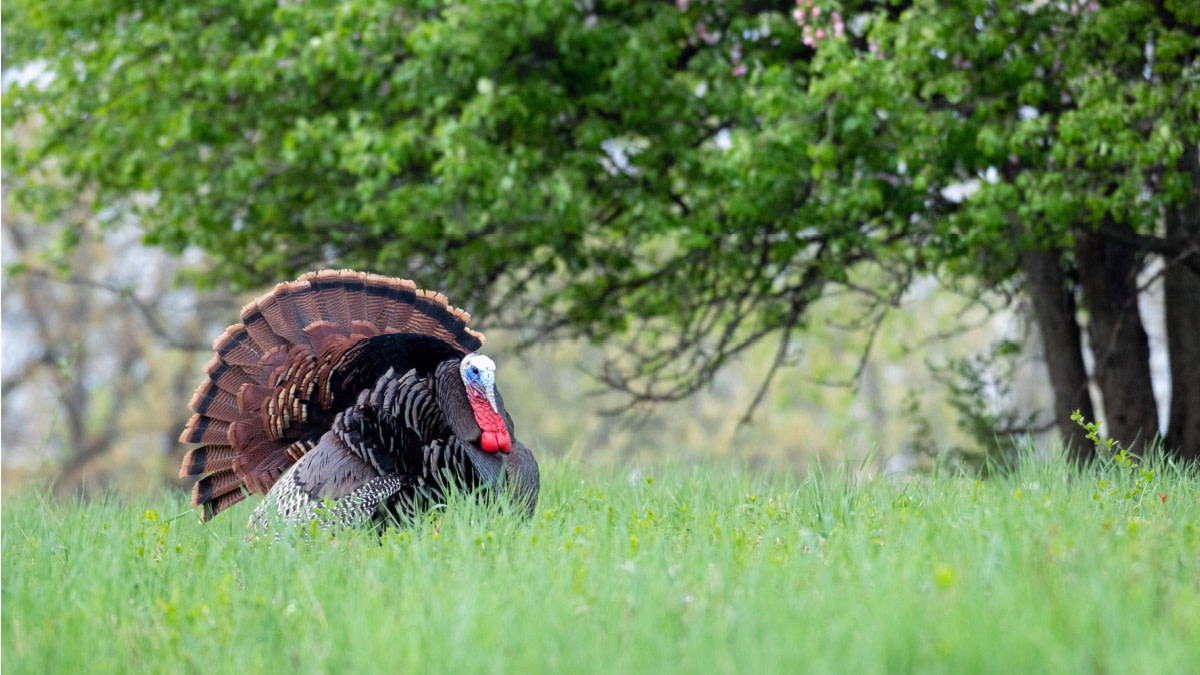
Most turkey hunters love the early season. Getting the first crack at the birds when they should be highly callable is a no brainer, and there are plenty of April toms in freezers to prove that’s the case. But there’s also still quite a bit of time left in many states where the chance to fill a tag is real.
It won’t be the same as those earlier birds. May turkey hunting, with nesting hens, abundant food sources, and weeks of pressure, simply changes the game. Understand how to compensate for this change and you’ll be well on your way to killing longbeards while your competition is busy targeting walleyes or maybe getting in a few rounds of golf.
Cruisers & Strutters During the early season, toms will dog flocks of hens all day. In May, many of those ladies will eat for a few hours at first light and then wander off to lay on their nest. This leaves the toms on the hunt for new girlfriends, which makes them vulnerable.
Some birds seem to just want to cover ground, which could put them in your spread at any moment. Others go a more traditional route and head off to their favorite strutting grounds to see if they can flex hard enough to attract a hen or three. Hunters like outdoor writer Darron McDougal love these birds because they are highly visible and usually predictable.
“I want eyes on a strutter,” McDougal said. “If he’s all alone in the middle of the day strutting, I mark exactly where I see him. The next day, I’ll be back there either with a blind setup on top of his spot if I’m bowhunting, or as close as I can get to still stay hidden if I’m shotgun hunting.”
Late-Season Decoys When McDougal slips into a strutting zone, he’s already where the bird is likely to go, so he pares down his decoy spread.
“In the late season, I often leave my jake decoy at home. Usually, a couple of hen decoys is enough to get him to commit because he’s expecting to lure hens into that spot already.”
This is an important late season lesson, so pay attention. While full-strut dekes or quarter-strut jakes are all the rage in the early season, the days of turkey-on-turkey violence are gone. Now, they’re dumb, angry birds that'll fight all year, but the pecking orders have long been established. Most May birds seem to be more like lovers than fighters as the season winds down.
Like McDougal, I’ll usually start the season with a jake decoys and four or five hens, but by mid-May I might be down to a single hen decoy or two. It often seems that decoy choice is important, but not as important as how you call. This is really the secret sauce to consistently killing late-season toms.
Call Like You Mean It When I was 15, I put my back to a tree on the edge of a plowed cornfield during Minnesota’s last season. The plan was to call softly and infrequently since it was nearly summer and the birds already experienced five weeks of hunting pressure.
When a lone strutter hit the far field edge, that’s exactly what I did. He could see my decoys, hear my soft yelps, and didn’t care at all. He nearly strutted out of sight before I had a full-blown turkey related panic attack and gave him all I could with my simple push-button call. Even from 300 yards away, I saw him pick his head up, and then start running. By the time he crossed the neighbors’ fence and walked into my decoys I was fighting off a real bad case of turkey fever, which led me to shoot him square in the chest.
Not only did I turn a 10-inch beard into a 2-inch beard, but I stunned him enough to get another one in him. I learned a lot of lessons that morning, but the most important was to call like a bird that wants company. McDougal does this as well, while leaning pretty heavy on diaphragm calls to say what he needs to say.
“Late-season toms are really susceptible to calling, especially if you’re close to them. I don’t follow the less-is-more strategy, but instead call loud and often. This works on private land, but also works on public land birds, probably because I sound different from most of the other hunters.”
There’s still time to fill your tag. In fact, during a year where spring has inched along at a glacial place in many states, the best is probably yet to come. Just remember to keep your eyes open for a strutter, pare down your decoy spread, and call like you mean it.
Feature image via Matt Hansen.




